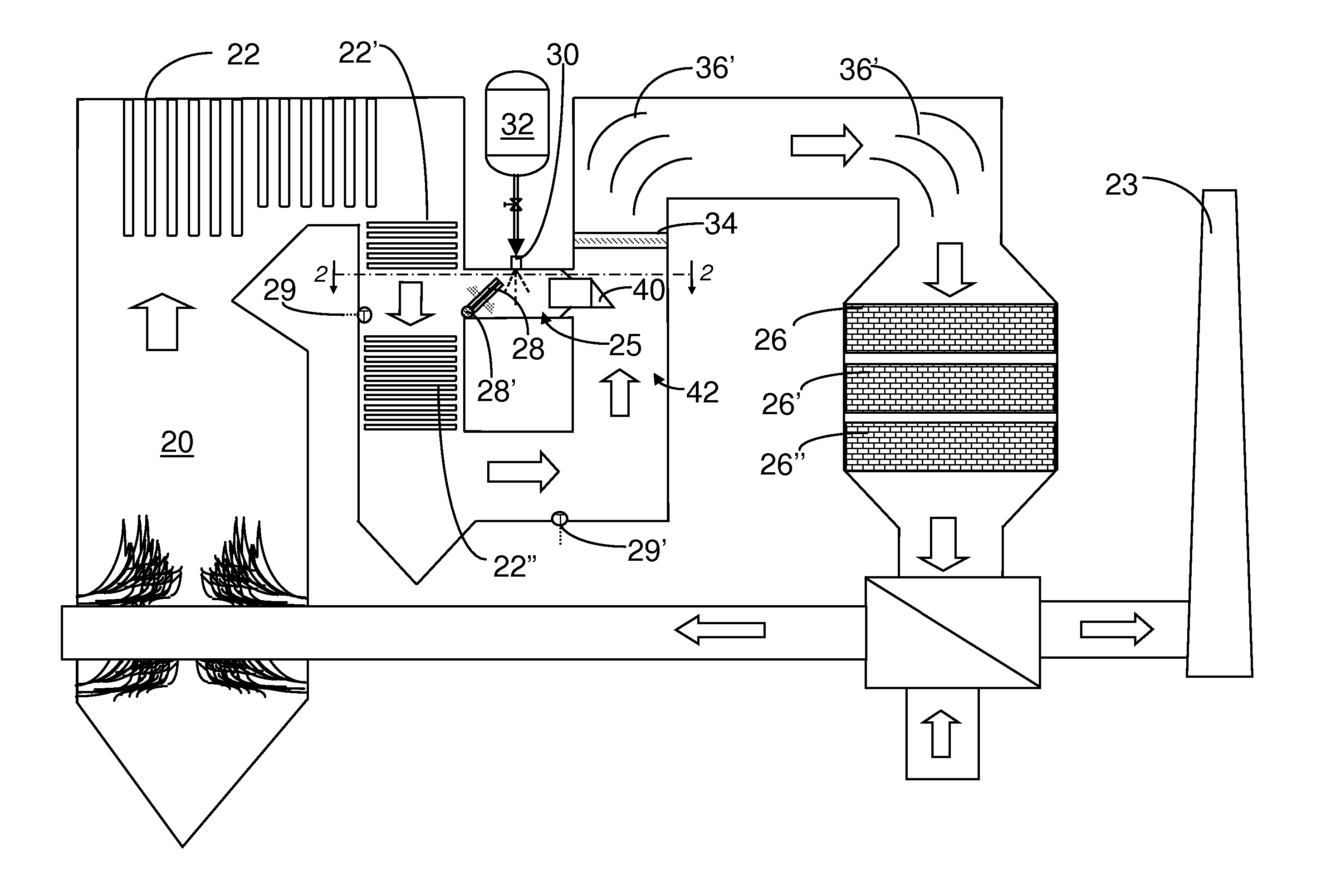SELECTIVE CATALYTIC REDUCTION OF NOx ENABLED BY UREA DECOMPOSITION IN HEAT-EXCHANGER BYPASS
a technology of nox and heat exchanger, applied in the field ofnox, can solve the problems of urea safety, high temperature, and inability to enable the use of lower temperatures
- Summary
- Abstract
- Description
- Claims
- Application Information
AI Technical Summary
Benefits of technology
Problems solved by technology
Method used
Image
Examples
Embodiment Construction
[0021] The invention provides a urea-based SCR process that can advantageously utilize the enthalpy of the flue gas, which can be supplemented if need be, to convert urea to ammonia.
[0022] This new process makes use of the easy handling feature of urea reagent and provides complete gasification and good mixing employing a bypass stream gas mass to provide thorough mixing required for high levels of NOx reduction. In particularly advantageous embodiments, heat necessary for gasification is derived solely from the enthalpy of the combustion gases.
[0023] The process is effective with urea, but can utilize other NOx-reducing reagents capable of generating a reactant gas containing ammonia upon heating. As will be clear from the following, when certain of these reagents are gasified, the reactant gas will also contain HNCO which can react with water from combustion and the aqueous reagent solution to convert to ammonia and carbon dioxide. It is an advantage of the invention that this c...
PUM
| Property | Measurement | Unit |
|---|---|---|
| temperature | aaaaa | aaaaa |
| temperatures | aaaaa | aaaaa |
| temperatures | aaaaa | aaaaa |
Abstract
Description
Claims
Application Information
 Login to View More
Login to View More - R&D
- Intellectual Property
- Life Sciences
- Materials
- Tech Scout
- Unparalleled Data Quality
- Higher Quality Content
- 60% Fewer Hallucinations
Browse by: Latest US Patents, China's latest patents, Technical Efficacy Thesaurus, Application Domain, Technology Topic, Popular Technical Reports.
© 2025 PatSnap. All rights reserved.Legal|Privacy policy|Modern Slavery Act Transparency Statement|Sitemap|About US| Contact US: help@patsnap.com



